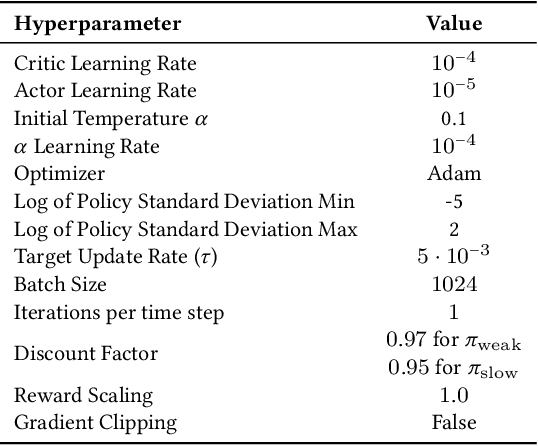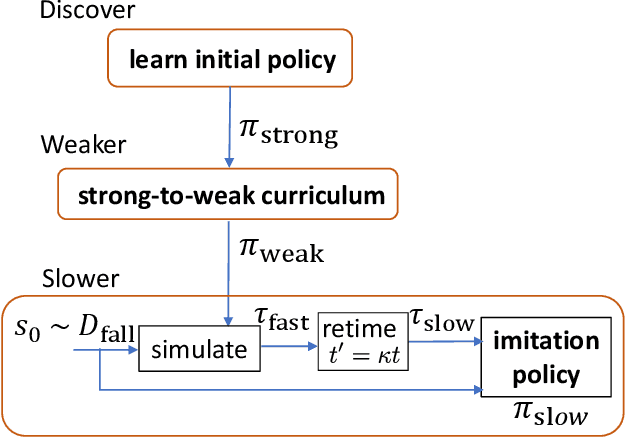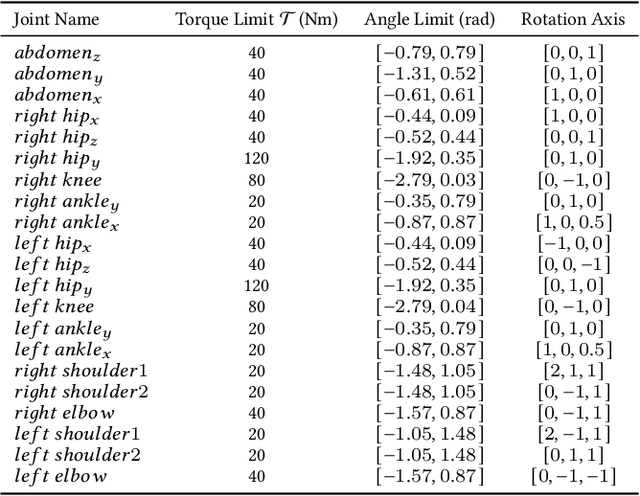Ruiyu Gou
Learning to Get Up
Apr 30, 2022



Abstract:Getting up from an arbitrary fallen state is a basic human skill. Existing methods for learning this skill often generate highly dynamic and erratic get-up motions, which do not resemble human get-up strategies, or are based on tracking recorded human get-up motions. In this paper, we present a staged approach using reinforcement learning, without recourse to motion capture data. The method first takes advantage of a strong character model, which facilitates the discovery of solution modes. A second stage then learns to adapt the control policy to work with progressively weaker versions of the character. Finally, a third stage learns control policies that can reproduce the weaker get-up motions at much slower speeds. We show that across multiple runs, the method can discover a diverse variety of get-up strategies, and execute them at a variety of speeds. The results usually produce policies that use a final stand-up strategy that is common to the recovery motions seen from all initial states. However, we also find policies for which different strategies are seen for prone and supine initial fallen states. The learned get-up control strategies often have significant static stability, i.e., they can be paused at a variety of points during the get-up motion. We further test our method on novel constrained scenarios, such as having a leg and an arm in a cast.
 Add to Chrome
Add to Chrome Add to Firefox
Add to Firefox Add to Edge
Add to Edge